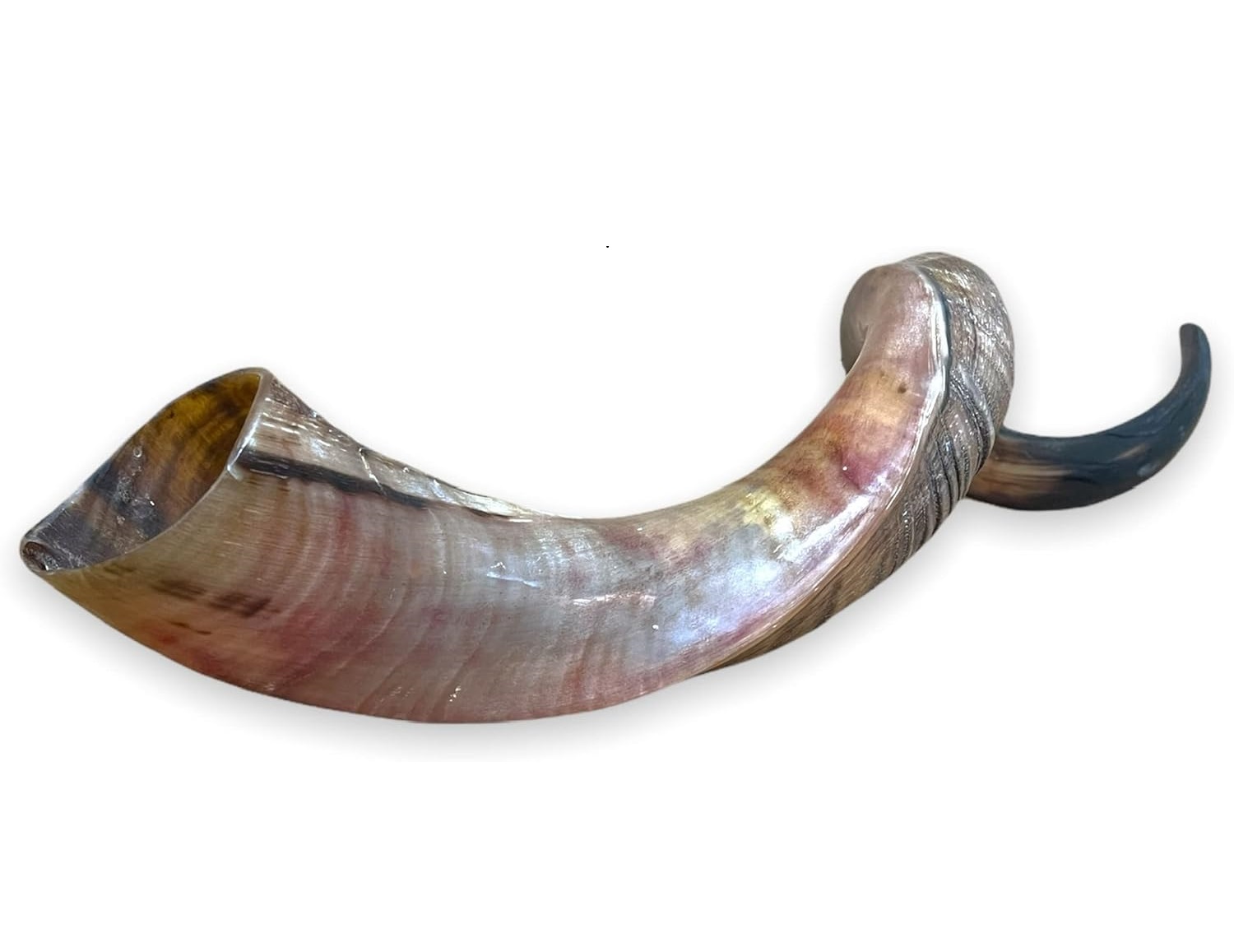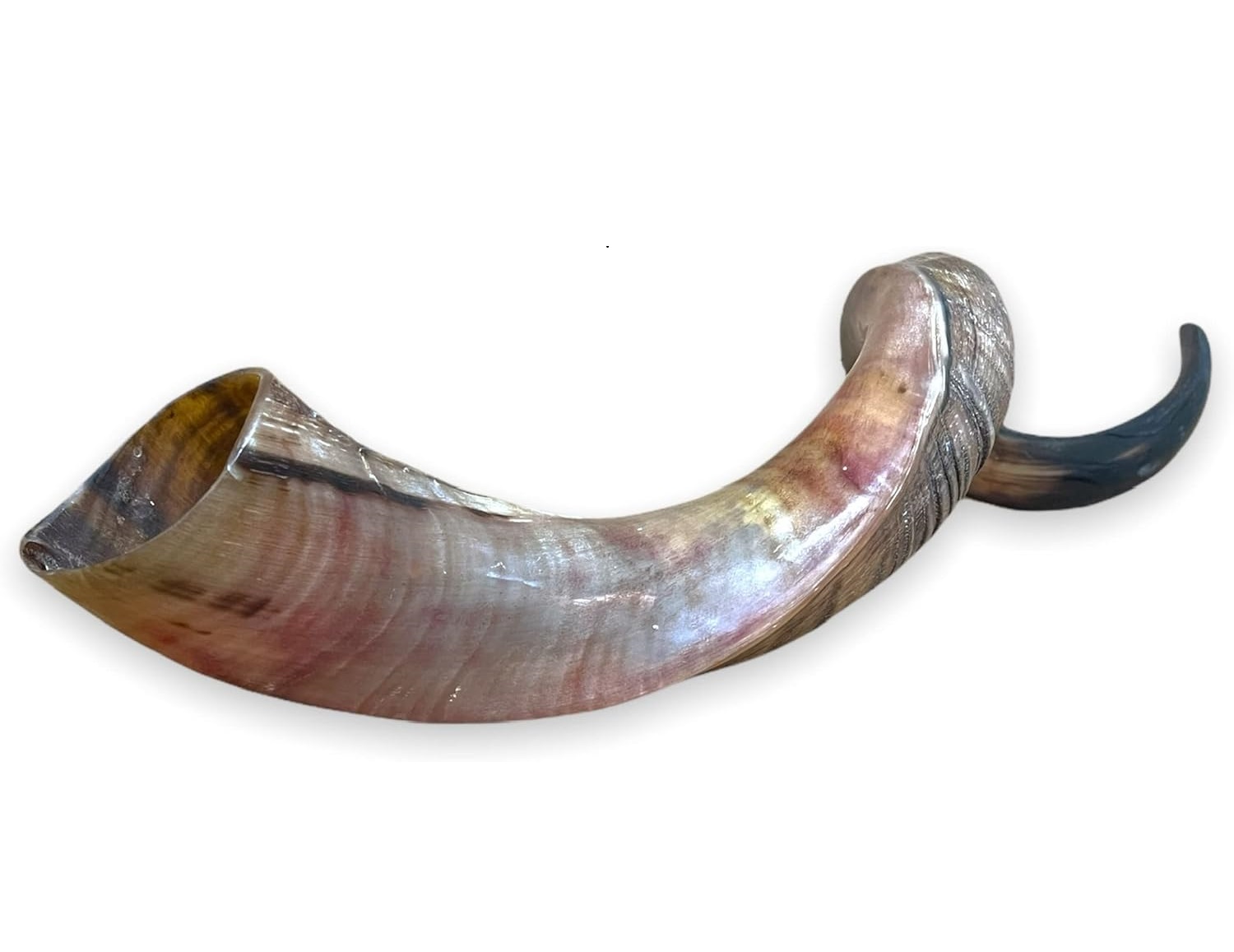Kudu Horn
Woodwinds
Africa
Ancient
Video
The kudu horn is a wind instrument traditionally crafted from the horn of the kudu, a large antelope native to Africa. It is known for its deep, resonant sound and its distinctive spiral shape. The instrument is typically played by blowing into a small opening at the tip, producing a range of sounds depending on the technique used by the player. The kudu horn is closely associated with African cultural and musical traditions, often used in ceremonial, ritualistic, and musical contexts. Its curved structure and varying lengths contribute to its unique tonal quality, making it a prized instrument in various African communities.
Type of Instrument
The kudu horn is classified as an aerophone, a category of musical instruments that produce sound primarily through the vibration of air. More specifically, it falls under the natural horn family, meaning it lacks valves or keys and relies on the player’s embouchure and breath control to change pitch. The kudu horn is similar to other traditional wind instruments like the shofar, which is used in Jewish religious practices, and other animal horn instruments found across different cultures.
History
The kudu horn has a long history, deeply rooted in the African continent, particularly in regions such as Southern and Eastern Africa. Historical records suggest that animal horns have been used as musical instruments for thousands of years, with the kudu horn being prominent among African communities for several centuries. While it is difficult to pinpoint the exact century in which it originated, evidence indicates that the kudu horn has been used for at least a thousand years, playing a significant role in African tribal and cultural traditions. The instrument has been passed down through generations, maintaining its status as a vital component of African musical heritage.
Types of Kudu Horn
Kudu horns can vary in size and shape, depending on the age and species of the kudu from which they are derived. Generally, there are two main types:
Single Kudu Horn – This is a singular horn used as a standalone instrument. It is commonly played for signaling and ritualistic purposes.
Double Kudu Horns – Some musical traditions involve using two kudu horns of different lengths to create a more diverse range of tones. These are sometimes played by a single musician or by multiple players in an ensemble.
Characteristics
The kudu horn is a traditional African wind instrument crafted from the horn of the kudu antelope. It is naturally curved and hollowed out to function as an aerophone, producing a deep, resonant, and warm sound. Its size varies, with longer horns generating lower pitches and shorter ones producing higher tones. Some versions feature finger holes, allowing for a wider range of notes. The instrument is typically played by buzzing the lips against the narrow end, similar to brass instruments. Used in ceremonies, religious rituals, and hunting calls, the kudu horn holds cultural significance in various African communities, symbolizing communication, celebration, and spiritual connection.
The kudu horn is naturally made from the horn of the kudu antelope, specifically the male kudu, which possesses long, spiraled horns. The horn is carefully hollowed out to create an air passage, allowing it to function as a wind instrument. Some modern versions may be modified with mouthpieces to improve playability, but traditional kudu horns remain true to their natural form. The durability and natural acoustics of the kudu horn make it an excellent instrument for producing deep, resonant tones.
Playing Methods and Sound Production
The kudu horn, a traditional African wind instrument, is played by buzzing the lips against its narrow end, similar to brass instruments like the trumpet. Typically made from the horn of a kudu antelope, it has a natural curvature and can vary in size, affecting its pitch and resonance. The player controls the pitch by adjusting lip tension and breath pressure, producing a deep, resonant sound with a rich, warm tone. Some kudu horns have multiple openings, allowing for a range of notes when different finger holes are covered or uncovered. Often used in ceremonial, religious, and hunting contexts, the kudu horn serves as a signaling instrument and plays a significant role in traditional African music and cultural expressions.
The kudu horn is played using various traditional techniques, which may differ depending on the cultural context. Some common playing methods include:
Straight Blowing – Producing a steady, consistent tone.
Pulsed Blowing – Creating rhythmic bursts of sound.
Overblowing – Generating higher pitches by increasing air pressure.
Call and Response – Often used in group settings where players take turns playing phrases.
Circular Breathing – Some skilled players use circular breathing to produce continuous sound.
Sound is produced by blowing air into the narrow end of the kudu horn. The player must control their breath and embouchure to create different pitches. The instrument does not have valves or finger holes, so all pitch variations come from the musician’s technique, including Lip Tension – Adjusting the tension of the lips changes the pitch, similar to brass instruments. Air Pressure – Blowing harder or softer affects volume and tone. Mouth Position – The way the mouth is positioned over the opening can create subtle tonal differences. Hand Muting – Some musicians use their hand to partially cover the opening, modifying the sound.
Roles in Music
The kudu horn plays multiple roles in musical traditions, including Ceremonial Use – Frequently used in traditional African ceremonies, including weddings, funerals, and initiation rites. Signaling and Communication – Historically used to send messages across long distances. Religious and Spiritual Practices – Incorporated into rituals and prayers to invoke spiritual presence. Traditional Music Ensembles – Played alongside drums, rattles, and other instruments in African folk music. Storytelling and Oral Traditions – Sometimes used to punctuate storytelling performances.
Musical Contexts
African horns are versatile instruments that can be used solo or within ensemble settings. They provide melodic lines or rhythmic accompaniment depending on their role within different pieces of music. In some cases, they serve purely ceremonial purposes by signaling important moments during rituals or celebrations.
Preservation Efforts
Efforts are underway to document traditional African horn music through recordings and educational programs aimed at preserving this rich cultural legacy for future generations. These initiatives highlight not only historical importance but also ensure continued relevance by integrating these sounds into modern compositions.
Cultural Significance
The kudu horn holds deep cultural significance in African societies. It is more than just a musical instrument; it represents tradition, spirituality, and community identity. Among the Zulu people of South Africa, the kudu horn is often associated with warriors and leadership, used in battle calls and royal ceremonies. In Ethiopia and Eritrea, similar instruments are used in religious contexts, emphasizing their spiritual importance. The kudu horn’s use in traditional healing practices, rituals, and celebrations highlights its enduring cultural relevance.
The instrument has also gained recognition beyond Africa, featuring in global music performances and fusion genres. Musicians worldwide have incorporated the kudu horn into jazz, world music, and experimental compositions, broadening its reach while preserving its traditional roots.
The kudu horn is a remarkable wind instrument with a rich history and cultural importance. Its unique sound, natural construction, and role in African traditions make it an enduring symbol of musical heritage. Whether played in rituals, celebrations, or modern compositions, the kudu horn continues to captivate audiences with its deep, resonant tones and profound cultural connections.
FAQ
What is the origin of the Kudu Horn?
The Kudu Horn originates from Africa and is made from the horn of the kudu, a large antelope. It has been used for centuries by indigenous communities for communication, rituals, and music. Traditionally, it holds cultural significance among groups such as the Zulu and Xhosa people. The instrument's deep, resonant sound is iconic in African musical traditions.
What are the uses of the Kudu Horn?
The Kudu Horn is used in ceremonies, religious rituals, and as a means of communication. It plays a key role in traditional African music and is often used in tribal dances and performances. Modern musicians also incorporate it into contemporary genres, blending traditional and modern sounds. It serves as a symbol of heritage and unity in African cultures.
What role does the Kudu Horn play in music?
In music, the Kudu Horn is valued for its deep, haunting tones and natural resonance. It is often used in traditional African ensembles and ceremonial performances. The instrument contributes to rhythmic and melodic elements, enriching the sound of African music. Some jazz and world music artists incorporate it for its unique tonal quality.
 Links
Links
References
Other Instrument
Categories




















